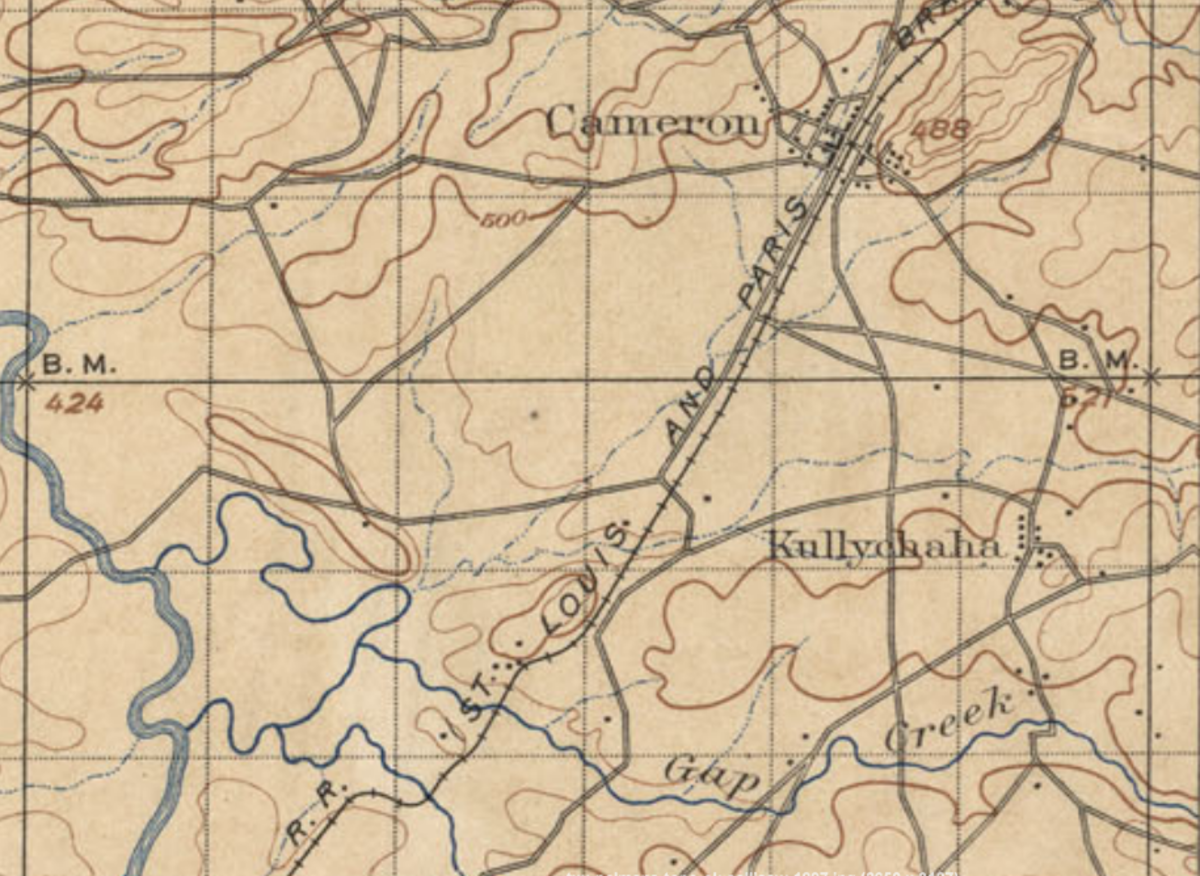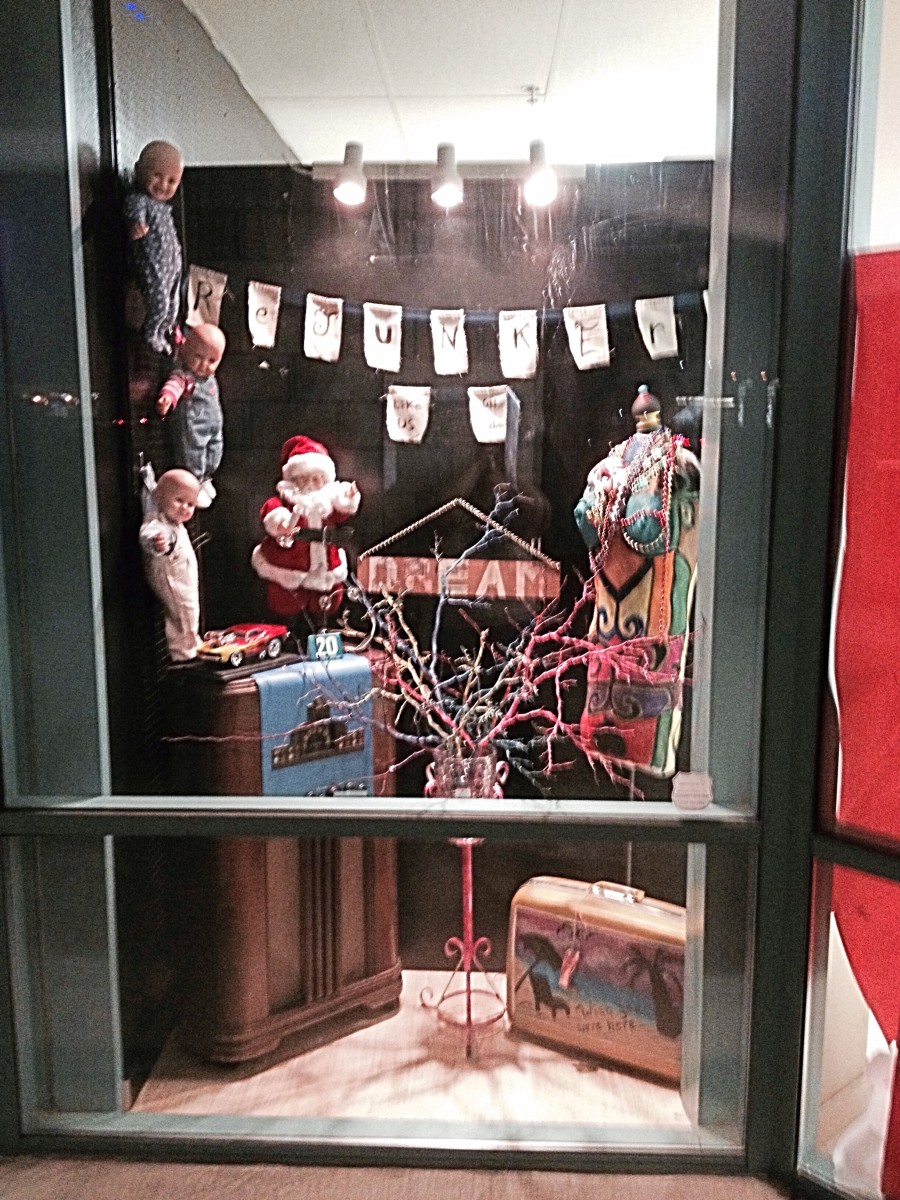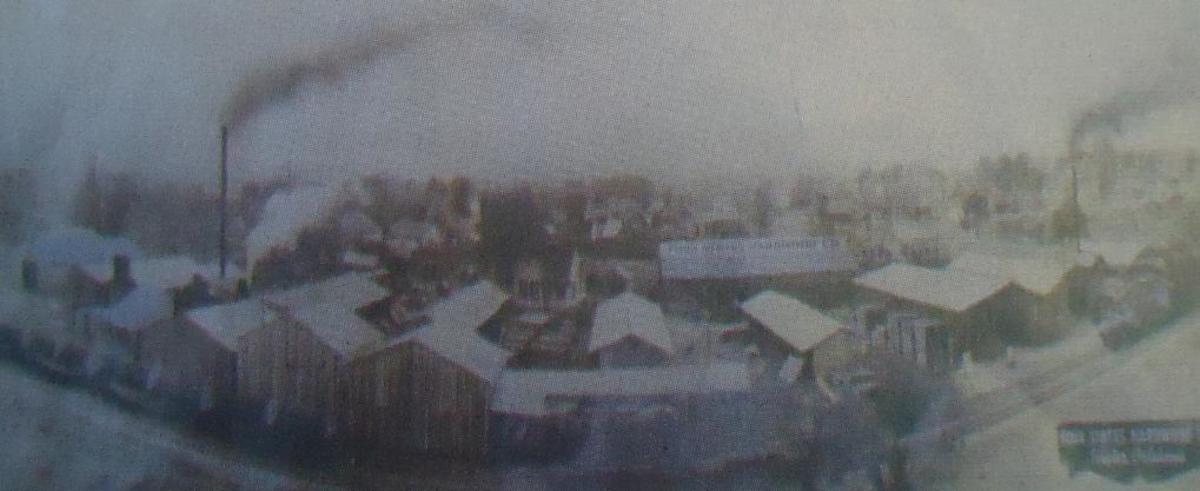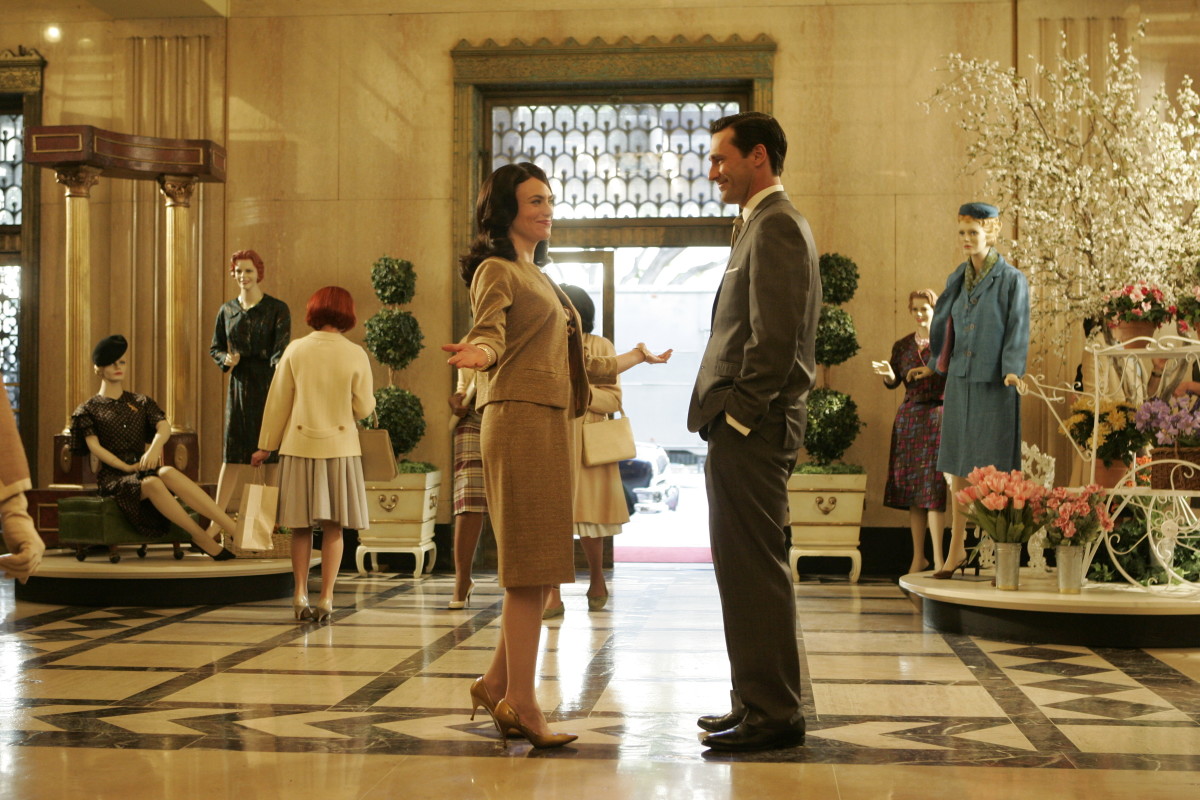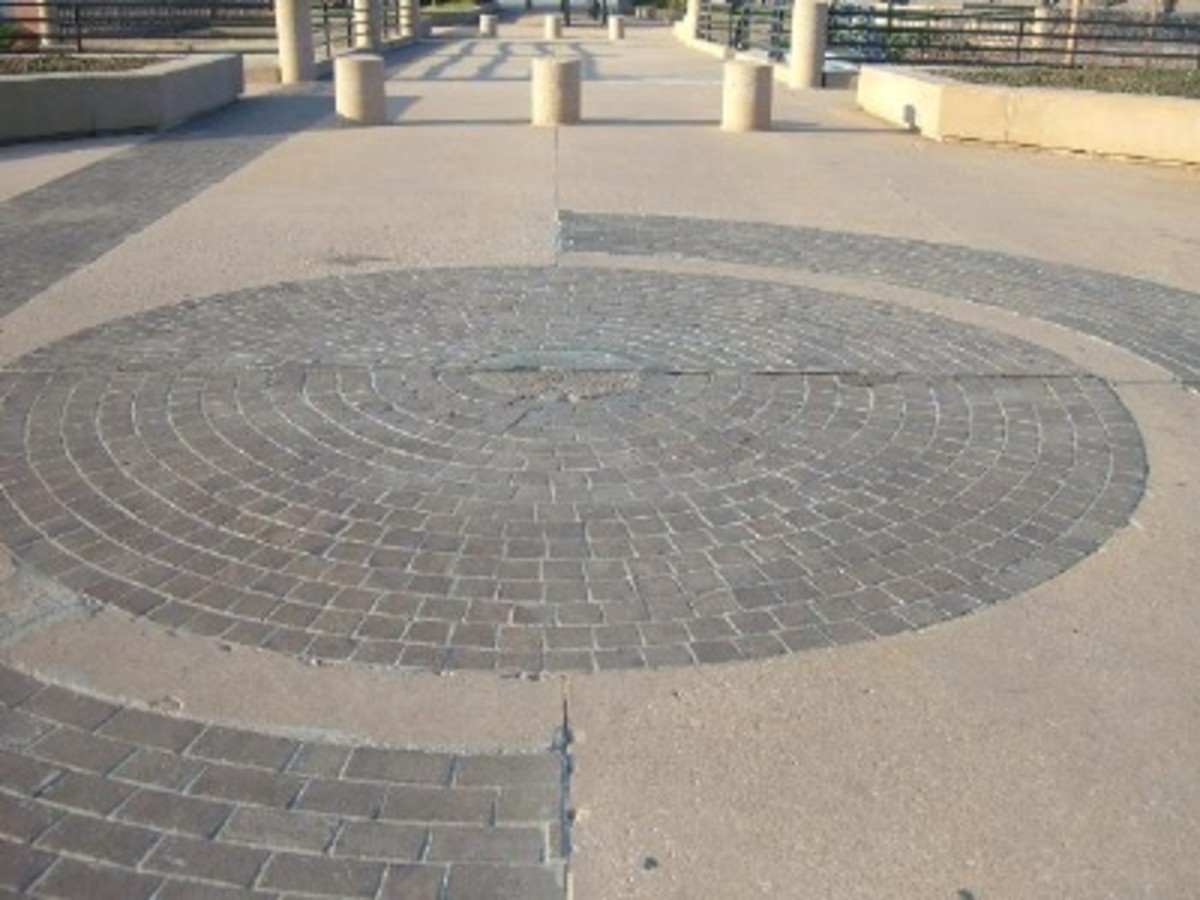- HubPages»
- Travel and Places»
- Visiting North America»
- United States
Early Life in Poteau Switch
Poteau had remained a sleepy little agricultural village until the late 1880’s. Once the railroad to Bengal was completed in 1886, the area immediately saw a building boom. Poteau didn’t gain official status until the following year when, on October 27th, the first post office in town was established. The new town, officially known as “Poteau Switch” took its name from the nearby Poteau River. The post office was located in Bud Tate’s general store, located on what would eventually become the courthouse lawn. The first postmaster that served Poteau Switch was Jap Evans.
Eight miles northeast of Poteau Switch, Cameron was a lively, bustling town. The town had a population that nearly doubled that of Poteau Switch. As the Federal court was located in Cameron, residents of Poteau Switch had to travel there for official business. Before the St. Louis and San Francisco established the first passenger service in Poteau, people had to travel on horseback through rugged terrain to reach Cameron. Traffic to Cameron was frequent, as the town also hosted the nearest passenger train service.
During this time, life in Poteau Switch resembled much of the rest of the country. The railroad depot served as the core of the town. As in many cities throughout the country, people milled about the depot as they waited for the train to arrive. Other groups congregated in one of the four hotels in the area, engrossed in popular gambling games such as poker or seven-up. During the hot summer months, porches in front of the businesses lining Railroad Avenue would be nearly overcrowded with people, while during the winter they would huddle up around their wood-burning stoves.
Much of the area surrounding Poteau Switch was dotted with large farms. Horses pulled the crop-laden carts along the wide roads to the freight depot or to the market. Corn and cotton were among the more popular crops to plant. During this time, farmers would produce about 45 bushels of corn or 1 1/2 bales of cotton per acre. Poteau Switch area also contained numerous horse farms, hog farms, dairy farms, and cattle ranches.
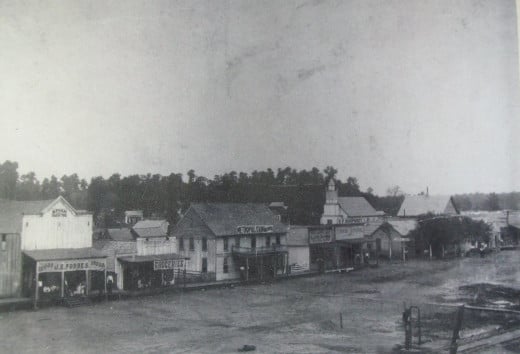
Early Poteau Businesses
During the early days, settlers into Poteau Switch simply began building where there was room. No town plan had ever been laid out, and remnants of this chaotic building spree can still be seen in modern Poteau. Walter Beard’s blacksmith shop was once located in the center of Beard Avenue, near the corner of the current county courthouse. On present day Dewey Avenue, between South Witte Street and North Harper Street, Dewey begins curving significantly towards the south. An old story states that the reason the street is like that. During the time the street was laid out, a log cabin hung halfway over where the street was scheduled to go. The owner of the cabin refused to move it. Undeterred, the builders simply moved the street.
After the railroad came through Poteau Switch in 1886, the main business district began in the area where the courthouse lawn is today. John Dennis and his son, Jim, built a store for William Anderson Welch, Sr. on the northeast corner of the courthouse lawn. They also constructed a store for R.F. Forbes almost 200 feet south of Welch’s store, which would be known then as Forbes and Donage’s.
By 1890, Welch’s store became one of the most visited stores in the area. Welch’s store was close to 30 feet back from the edge of the present courthouse lawn. Bud Tate’s store nearby had closed down, and the old Poteau Hotel was constructed in its place. Sam McKissack constructed the first blacksmith shop in Poteau. Other businesses located on the present courthouse square included two barbershops and a butcher shop. Cox’s Drug Store, Smith’s Millinery, the post office, and the city hall were all located in one building on the southeast corner of the courthouse square.
As Poteau Switch continued to expand, new wood-frame buildings were constantly under construction. Resembling a scene from an old western movie, these buildings ran the length of the St. Louis and San Francisco right-of-way for quite a distance. At this time, there were very few businesses on the southeast side of the tracks, where present day downtown Poteau now stands.
Since whisky was illegal in Indian Territory, saloons and other, such establishments didn’t exist. Still, that did not deter residents from seeking a good time. In 1886, Flener’s Hotel was built directly across the street from Welch’s store and was one of the most popular destination spots at Poteau Switch. While many visitors came to the two-story hotel for the beds, others came for the entertainment. On weekends and for special occasions, Melvin Flener would convert the dining room into a dance hall. Local musicians would play popular songs such as "When the Foeman Bares His Steel" or "When a Felon's Not Engaged".
Melvin Flener served as the floor manager at these events, and he was a no-nonsense type of guy. One old report told that anyone who became too rowdy “was promptly and quietly visited by Flener who hit the said unwanted customer in the head and took him out for fresh air.” In the front room, it was a common sight to see patrons playing gambling games. For the most part, these games remained civil. Occasionally, especially when whisky was smuggled in from Jensen, Arkansas, the games got too heated. Pistols would appear and Flener would have to take drastic measures. On October 5, 1898, Melvin Flener closed the hotel for good. By then, he had been in business for twelve years and wanted a rest.
Besides Flener’s, other hotels included the smaller Howell hotel and the Poteau Hotel, both located on northwest side of the tracks. Hotel Eastern was the only one on the other side, and it was almost as big as Fleners.
Several millinery stores and barbershops served the more fastidious residents, as well as the casual visitor.
For men, a weekly visit to the barbershop was almost essential. As the town grew in stature, any well-respected man in Poteau Switch had to keep a clean and tidy appearance. Many could no longer be seen as a shaggy-looking settler. The three barbershops in town kept a brisk business, serving not only the residents of the town but also serving the many railroad travelers.
Most shops were small and tidy. The shop consists of a straight-backed chair with a head piece resembling a crutch, a basin of water, a piece of common soap and a brush, 'setting' chairs and enough towels to last a week; "One towel to every ten to twelve customers.” Haircuts were generally five or ten cents and shaves were three cents.
As the barbershops were of paramount importance to men, the millinery stores were essential for women. During the late 19th century, etiquette articles suggest that it would be a disgraceful act for a woman to venture out of the house without a hat or even gloves. The two millinery stores at Poteau Switch served the population well. Massively elaborate hats to simple schoolgirl bonnets were produced here.
Fashion followed the same lines as it did across the rest of the country. Men typically dressed well, wearing slacks, button down shirts covered with fashionable vests, and the ever-present fedora. Even while working, men still wore button down shirts, minus the vest, and comfortable trousers held up by suspenders. Women’s dress was a quite a bit more elaborate. Fancy dresses and ornate hats were standard. The dresses typically consisted of a tight bodice with the skirt gathered at the waist and sweeping down to the ground. Underneath, women wore tight fitting corsets, a trend that wouldn’t disappear for many years. It could easily take a woman more than an hour to get dressed, and a change of clothes was required for different events throughout the day.
Most clothing and other common household items were purchased through the local general stores, but many people opted to purchase these items through mail order catalogues. Companies such as Montgomery Ward sent catalogs all across the country, and many people of Poteau Switch took advantage. Within a few weeks, the items they had ordered would arrive by train.
Besides the general merchandise stores, Poteau Switch boasted of having a hardware store, a furniture store, and a cobbler. For such a young town, this in itself proves the rapid growth that took part here.
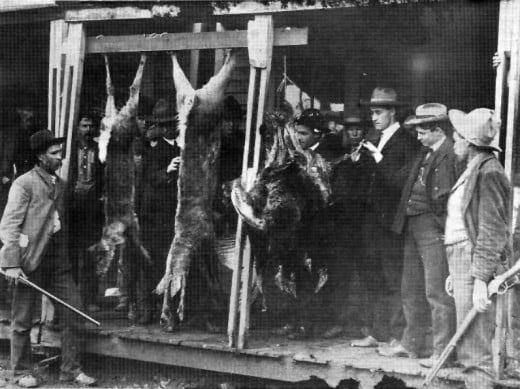
Health and Wellness
When people were sick or injured, they relied on one of the two drug stores in the town. During the 1880’s, Dr. Cox was the only doctor in town. He also owned the largest drug store in the area. While these stores did a brisk business, most people relied on home remedies for minor irritations. In fact, during this time, whiskey seemed to be the cure for any type of ailment.
The drug stores stocked the medicines that were available to them. Rows of glass bottles lined the shelves with such unique labels as “Dr. Williams' Pink Pills for Pale People", "Beechham's Pills", and "Ayer's Sarsaparilla". These pills promised to do everything from changing the color of one’s skin to instantly reliving constipation. Opiates were welcomed as an ideal tonic, and large numbers of Americans became addicted. Antiseptics and Antibiotics were not available until after the 1900’s. Even aspirin, the modern day cure-all, was not invented until 1899, and it would be several years until they gained widespread popularity.
Even with their lack of modern medicine, doctors and druggists got by fairly well. Most physical ailments were treated to the satisfaction of the patient. Diet and exercise in the form of physical labor contributed to the well-being of the residents of Poteau Switch.
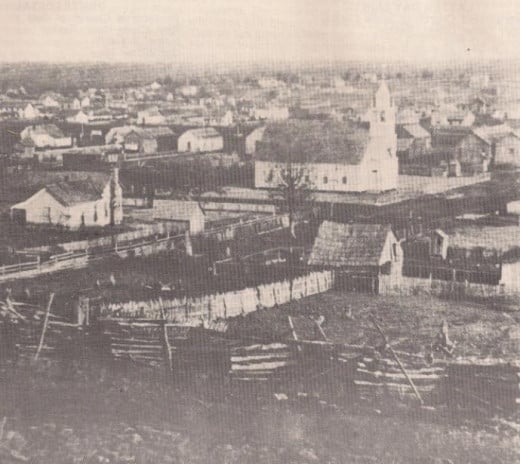
Life in General
As the area around Poteau Switch was mainly agricultural, and game was varied, most residents were able to keep a healthy diet. Two butcher shops supplied residents with fresh meat from the nearby farms. In addition, the two grocery stores imported foods by rail from around the country and sold them to local residents.
Mentioned previously, people relied on horse for travel throughout the area. Farmers also made great use of horses, as powerful machinery had not arrived in Poteau Switch yet. To house the large population of horse in the area, several stables were constructed throughout town. These stables were located on just about every corner of old Poteau Switch, and it seemed that there were more stables than there were businesses.
For those traveling about Poteau Switch, a livery yard was established. The livery yard offered horses and teams for hire, and provided a place where privately owned horses could be boarded for a short time. In addition to providing vital transportation service, the livery was the source of hay, grain, coal, and wood. Because of the stench, noise, and vermin that surrounded the livery, cities and towns attempted to control their locations and activities. Often the scene of gambling, cockfighting, and stag shows, they were condemned as sources of vice. With the advent of the automobile after 1910, the livery stables quietly disappeared.
This one and a half story building was located on the southwest end of town. Towards the northeast, near the edge of town, a larger wagon yard was established. This wagon yard provided the same services as the livery, but also offered wagons and buggies for hire.
The shop owner’s homes were scattered about the outskirts of the main business district. Beyond that, the larger farmers’ homes were scattered about the countryside. Even though these homes were not large, they served the residents well.
Typically, most homes averaged an area of around 500 square feet. Larger, more lavish homes, like the ones found behind the few shops along Dewey Avenue could range closer to 2,000 square feet, but these were rare. By 1899, there were only two houses that equaled this size.
Most homes consisted of a single room, or, at most, a couple small rooms separated by full-length partitions. As the inhabitants of Poteau Switch grew more settled, larger “cottage” style homes began to replace the older homes.
As modern electricity was a thing of the future, homes during this time consisted of an iron wood-burning stove for cooking and heating and kerosene lamps were used for light. During the hot summer months, residents would spend most of their time cooling off on their wide porches. Many times, especially during the hottest times of the year, people would sleep outside in order to stay cool.

